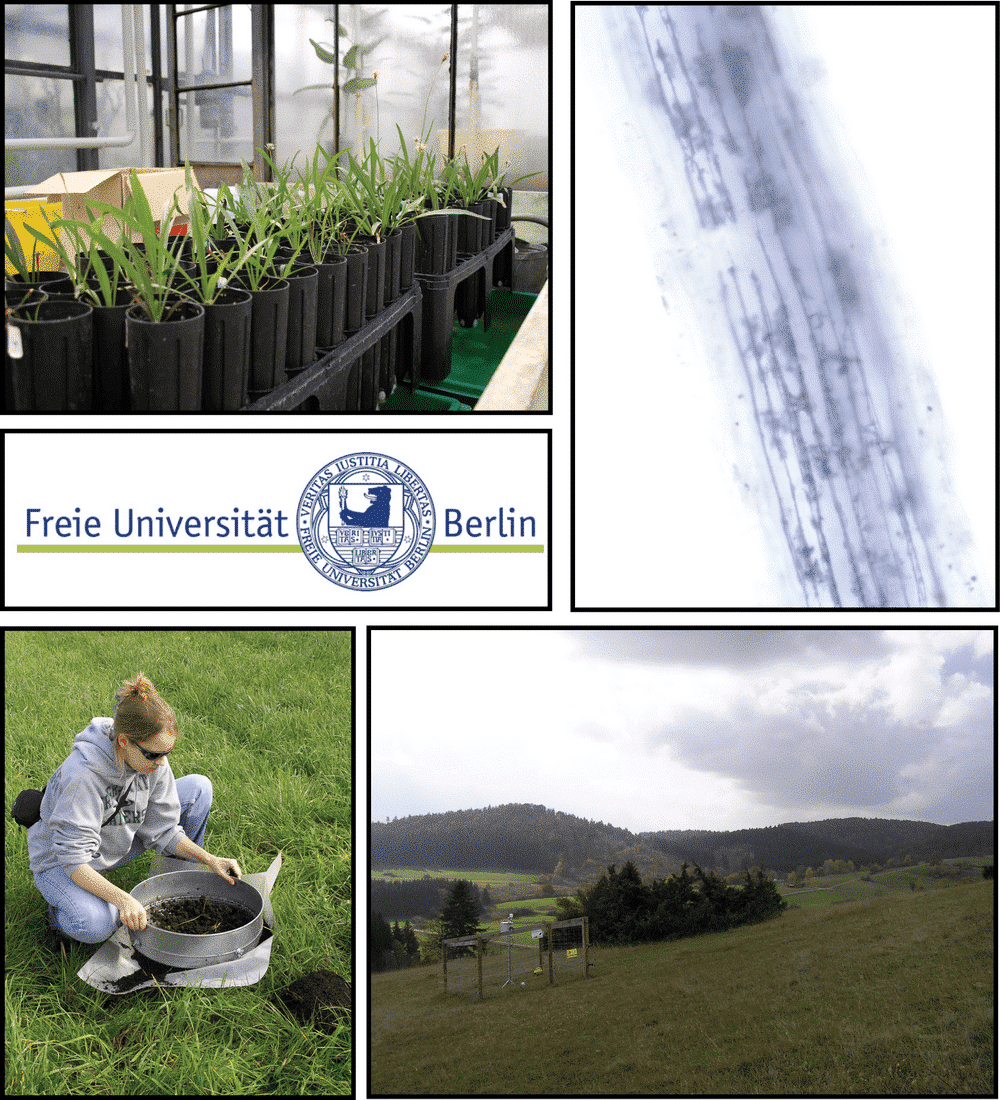Biodiversity and land-use effects on soil structure and arbuscular mycorrhiza
The soil structure is a central ecosystem parameter which describes the distribution of soil pores and soil aggregation. The soil structure influences basic biogeochemical processes, e.g. carbon storage in the soil, and affects the distribution of soil organisms that control pools and fluxes. The data on the sensitivity of soil structure to changes in biodiversity are scarce for all organism groups involved in the structuring (plants to micro organisms) .
The Biodiversity Exploratories offer the possibility to measure these interactions.

1. Along gradients in land use intensity the taxon diversity (and abundance) of AMF and plants will be positively correlated.
Our study will be the first to relate AMF taxon diversity (and abundance) and plant diversity in the field using molecular methods for AMF.
2. Increasing land use intensity will lead to decreased soil aggregation characteristics, in part as a consequence of decreased AMF abundance and/ or diversity.
One of the first landscape scale investigations on soil aggregation across complex land use gradients with an explicit link to mycorrhiza or plant diversity.
3. Specifically, AMF diversity has a causal relationship with soil aggregation.
Our central hypothesis is that with increasing diversity of plant or micro organisms (especially arbuscular mycorrhizal fungi, AMF) soil aggregation will increase. Mechanisms can be seen both in the complementarity of aggregation factors and the organism abundance.
The field work along land use gradients in forest and grassland is complemented by greenhouse studies in which especially the factor AMF-diversity is separated. We expect in this project many-fold co-operations with other projects within the exploratory community (e.g. data exchange to important soil taxa and ecosystem processes in grasslands), as well as new insights in the organismic role in soil aggregation in general.
Currently we work on soil samples collected in all exploratories. We measure root length and weigth, abundance of AMF in roots (root infection) and soil (hyphae length), and soil aggregation (size distribution). We currently test which molecular-ecological tools are suitable for the sample sizes. We will identify plots with high and low AFM diversity to use them in further greenhouse experiments.









